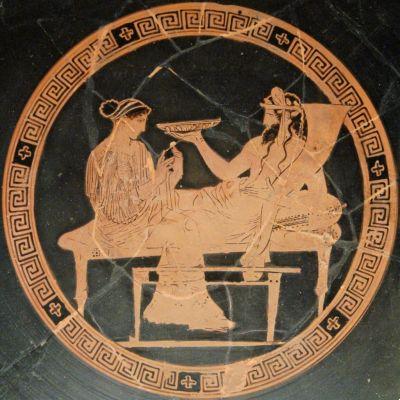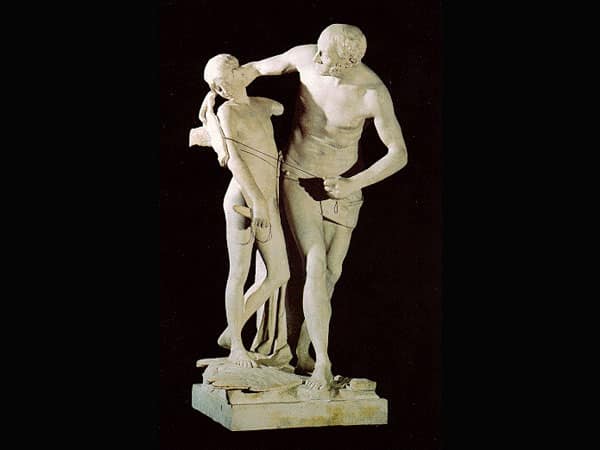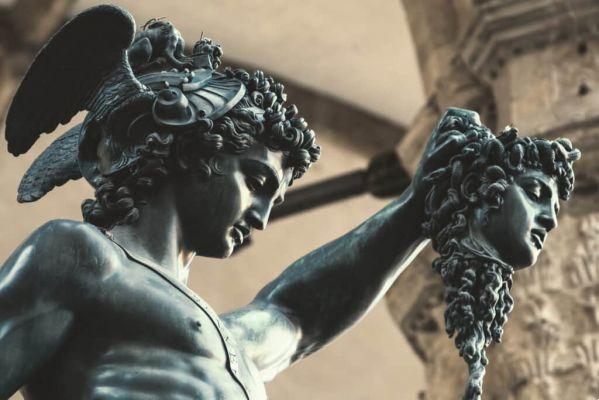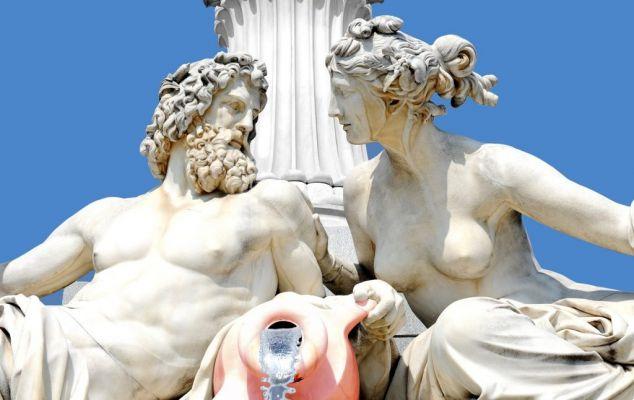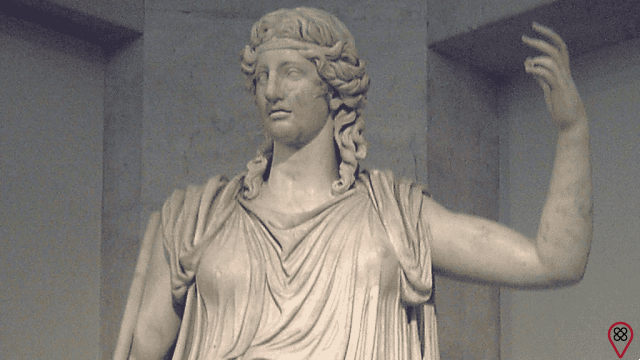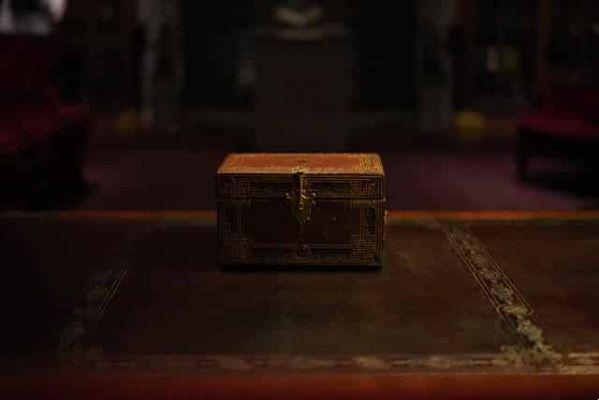Greek mythology is one of the most fascinating subjects of Ancient Greece, which worshiped many gods, built temples to perform cults and ended up later influencing the Roman Empire.
Meet Hades, one of the gods of Greek mythology, and learn what he represented in the daily life of the ancient Greeks.
The birth of Hades
Hades was the god of the underworld, son of Cronos and Rhea, brother of Poseidon and Zeus, among others. He ruled over a dark territory, the depths of the Earth, and was also considered the god of mineral riches, as his name means "the rich". In Roman mythology he represents Pluto. He is part of the second generation of gods in Greek mythology, whose grandparents are Gaia and Uranus.
Kronos, father of Hades, was a titan fearful of the prophecy that he would be defeated by one of his sons. Then, as soon as each child was born, he devoured it, no different with the god of the underworld. Thus, he secured his reign on Earth.
Rhea, mother of Hades, managed to trick Kronos and saved Zeus. Likewise, she made a drink and gave it to her husband so that he would vomit all the other children, including Hades.
All the freed brothers sided with Zeus against Kronos. They positioned themselves on Mount Olympus and, with the help of the hekatonchire titans, fought other Kronos supporters who were on Mount Othrys, in a battle that lasted ten years.
It was the titans Briareus, Coto and Gyges, in solidarity with the gods of Olympus, who gave them weapons: thunderbolts to Zeus, a trident to Poseidon and a helmet (helmet) to Hades, which made him invisible.
Hades then, putting on the helm, stole Kronos' weapons, while Zeus and Poseidon ended up destroying him and winning the battle.
The universe was divided into three and a draw defined the part that fell to each one. So Zeus got heaven and earth, Poseidon got the seas and rivers, and Hades got the underworld and the creatures of the shadows.
Hades was the only god who did not live on Mount Olympus, as he resided in a secret realm beneath the Earth. To get to it, you had to cross the ocean.
Hades and Persephone
Hades rarely left the underworld, however some titans had been imprisoned on Etna and, as they fought, cataclysms occurred, which made Hades leave his realm to ensure that he would not be exposed to the Sun, as he had an aversion to light. He then came to the world of the living.
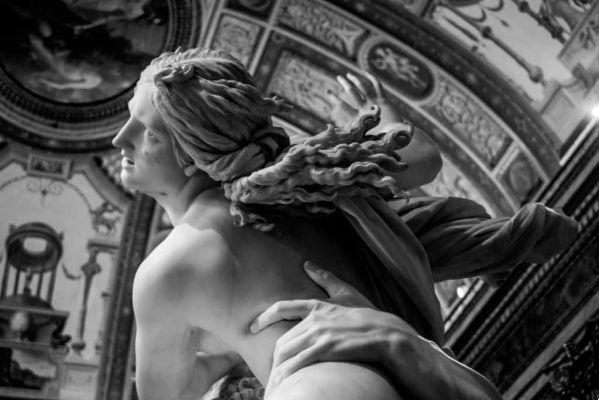
In this same scenario was Aphrodite, who challenged her son Eros on Mount Eryx to shoot her arrows at Hades, who was transiting there and was single. He ended up speared by love and saw Persephone, who, equally single, was walking around the region.
Persephone, known in Roman mythology as Cora, was the goddess of herbs, flowers, fruits and perfumes, the beautiful daughter of Zeus and Demeter (goddess of agriculture), therefore niece of Hades. She was kidnapped by him. Persephone asked for help, but her mother was unable to save her at that moment.
Hades dashed out with Persephone and, opening a rift in the earth, created an entrance to Tartarus.
Demeter went on a useless search for her daughter and ended up blaming the land for her suffering, casting the curse of the infertility of the soil and the death of the cattle, but she learned that, even though her daughter was sad, she was resigned to being the queen. from the underworld.
Despite knowing of Persephone's acceptance, Demeter went to Olympus and asked Zeus to restore her daughter, to which he agreed, warning Persephone not to eat any food in the underworld, for if she did, even he would not be able to take her away. from there, once the Fates (deities who controlled life and death in the fate of mortals) could trap her in the realm of Hades forever.
Zeus sent Hermes to the underworld to inform Hades of Persephone's rescue, who, at first, agreed to his brother's request. However, he offered the girl a pomegranate. Unaware of the condition, she ended up eating some seeds, sealing her fate.
Hades proposed a deal to Demeter, allowing Persephone, forever trapped in the underworld, to spend an annual season at her mother's side. She accepted and returned her fertility to the land.
Hades and Persephone, then, ruled the souls of the dead and had the role of judges of humans in the underworld, which is why Hades was also known as the "god of the afterlife".
Persephone's return to earth marked the seasons of autumn, spring and summer, while winter was the period when she would be in the underworld.
Persephone and Hades had no children.
Or myth of Hades
Hades was considered a faithful god, even though he betrayed Persephone with the nymph of Cocytus and fell in love with Leuce, the daughter of Ocean.
The marriage of Hades and Persephone has as its symbolism the union of two forces of nature: that of the subsoil, with all its mineral riches, driving everything that springs from it or from its interior, and that of youth and the blossoming of life, specifically addressed to the goddess and queen of the underworld.
It is important to understand that Hades was not the god of death, represented by Thanato. Hades was the president of the court of judgment of souls, but not the one responsible for extracting life. It was his role to assess the fate of the soul that reached his realm.
The Archetype of Hades
The archetype of Hades can be understood as the inner quest of the human being, represented by the driving force of plant growth, the place from which precious metals and gems are extracted and to which people's souls are taken after death: the underground.
Hades is the symbol of the individual and collective unconscious, in which the soul's treasures and potentialities are hidden or have not yet come to the surface, continuing in the shadows, at the same time it is also the repository of all fears, inner demons and hidden, dead or repressed things.
While in the unconscious are the universal human patterns and everything that humanity has ever lived in the collective, it is also where the energy of creation comes from, from something new that emerges from the core in which it was hidden.
The fact that Hades does not allow Persephone to leave his kingdom, once she has entered it, has the meaning of getting in return what he gives and, therefore, he was so feared. In human representation, it means the non-acceptance of death as an end.
The hope of an afterlife is precisely in Persephone, with her youth and resurgent life (she returns to earth routinely), as it is the seed that is reborn after having died. It represents the cycles of life, symbolizing that some things die so that others are born.
The archetype of Hades and Persephone together relates to the laws of life and death. On a personal level, it represents that in order to access new opportunities and let our inner wealth emerge, some inner contents must be sacrificed and killed, permeated by a judgment or a choice.
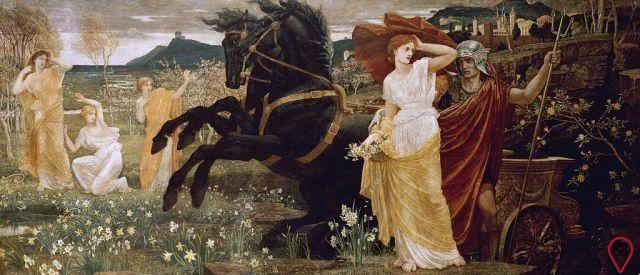
Hades and Persephone chose the fate of souls in the underworld, which was divided into two parts: Erebus, where souls were judged and received punishments or rewards, and Tartarus, a deeper place, where the Titans were imprisoned, so it was a place of prison.
As god of the underworld, he was believed to have the power to restore life; however, with an implacable personality trait, he hardly adopted such a posture, which caused fear in the Greek people, to the point that they did not even pronounce his name and tried to remain invisible to their eyes, as Hades was never defeated, and in his kingdom there was always room for many souls. Here we have the association with physical death.
Cult of Hades
The cult of Hades was very widespread in Ancient Greece, although he was much feared and called different names, such as "The Strong", "The Invincible", "The Zeus of Hell" and "Pluto", after the rule of the Roman Empire. .
The most important temples of Hades worship in Greece were in Pylos, Athens, Olympia and Élid, where daffodils and cypresses were offered.
In Rome there was the February festival, known as “Februationes” and also as “Caristia”. In this festival, bulls and black goats were sacrificed, always during the night, while the priest who conducted the ceremony wore a crown of cypress leaves. In honor of Hades, the Secular Games were held every hundred years, tribute to the god.
symbols of Hades
The images that portray Hades over time bring elements that represent the meaning and value of this myth. Meet some:
Cerberus – three-headed dog that guarded the gates of Tartarus and accompanied Hades. He was friendly, allowing souls to enter, but not letting them out, becoming fierce and feared by everyone. The only ones who passed through him were Heracles, Orpheus, Aeneas, Psyche and Odysseus.
You may also like
- Find everything you need to know about Greek Mythology
- Reflect on why people are or are not afraid of death
- Understand death as the transformation in life
Two-pronged scepter - symbol of life and death.
Key – represents mastery over the entrance and exit of the underworld and signifies the guarding of something priceless and overcoming the barriers of the unknown.
Cornucopia – symbol of abundance.
Cypress – represents change or death, both physical and emotional, which allows rebirth to a new condition, after a profound process of transformation.
Helmet of Invisibility - is also known as "Helmet of Darkness" or "Hades Cap". The helmet of invisibility was created by the Cyclopes and given to Hades after they were freed from Tartarus by Zeus.
Narcissus – some scholars of Greek mythology associate this flower with the abduction of Persephone, who, when stopping to pick it, is captured by Hades. The name stands for "numbness".
When we think about the myth of Hades and what this deity represents, it is not uncommon to reflect on our own concepts of death, especially how we enjoy life itself.
Especially regarding the archetypes that the myth provides us, it is possible to see the wealth left by the legacy of Greek mythology, so current in our days.
Mastering death or discovering what comes after it is a subject that is part of the human imagination. All the world's beliefs and religions address the topic.
An important contribution of the myth is the vision of going to the depths as a going to the very interior of the being, extremely useful for self-knowledge and for identifying fears, feelings of loss, transformations, the “demons” and beliefs. Think about!



